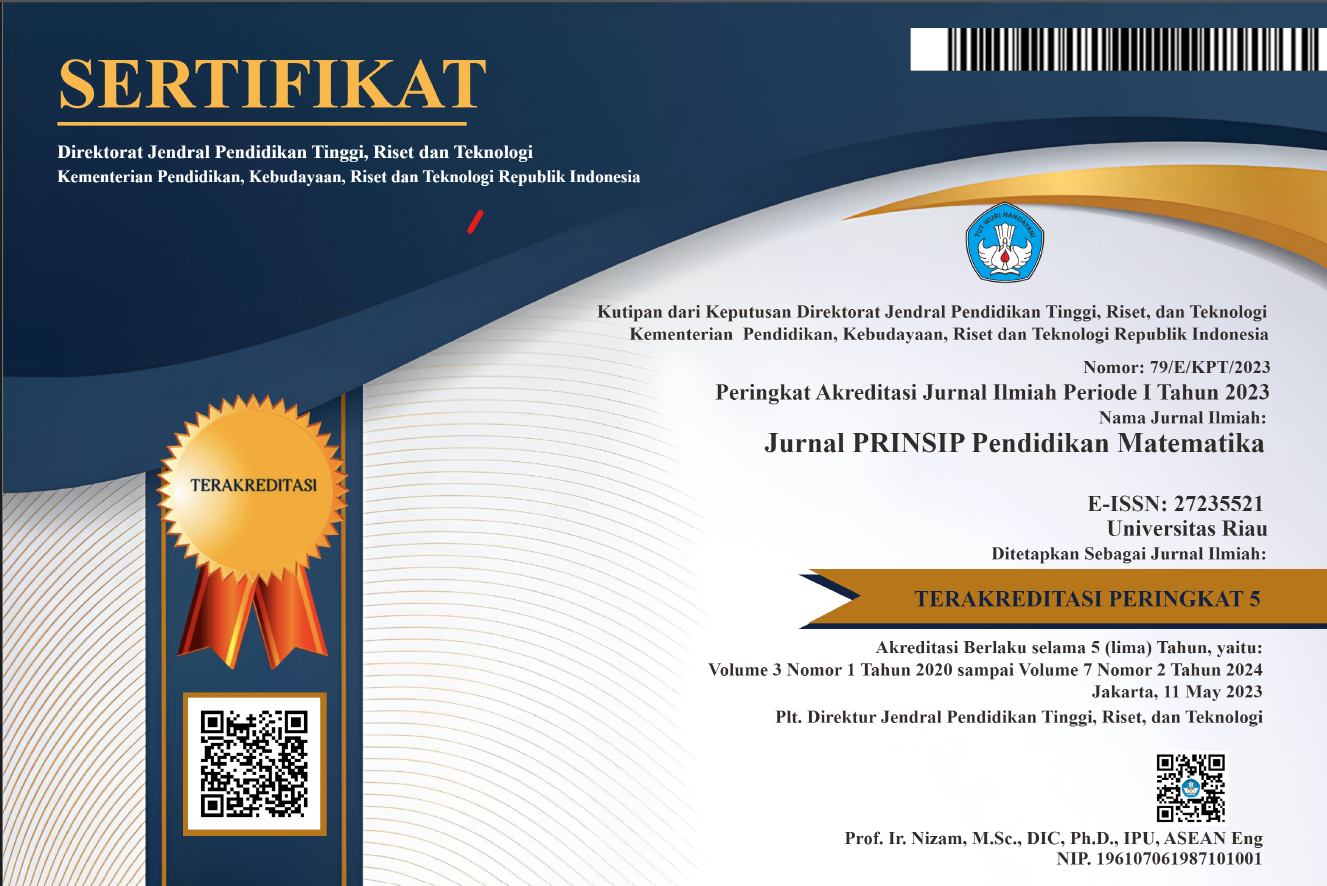IMPLEMENTATION OF METACOGNITION QUESTIONS THROUGH THE IMPROVE METHOD TO TRAIN STUDENTS’ MATHEMATIC CRITICAL THINKING ABILITY
Abstrak
This study aims to implement metacognitive questions to train critical thinking skills in mathematics lessons. This type of research is descriptive research. The steps to describe the implementation of these metacognition questions are implementation and evaluation. The number of subjects of this study were 8 students of class XI MIPA SMAN 2 Barru. The calculation of the assessment of mathematics learning outcomes at SMA Negeri 2 Barru with the IMPROVE method on linear program material including the average value is 57.35, the mode value is 54.15, the median is 56.7, the standard deviation is 10.70, the maximum value is 87, the minimum value is 45. Based on The results of these tests, it appears that student learning outcomes on linear program material through the development of metacognition questions in the IMPROVE method are still not optimal. This is due to several factors, namely the obstacles experienced by students in solving questions, incomplete research instruments, and the number of samples which were only 8 people. Optimizing critical thinking skills through the IMPROVE method can be done by overcoming the obstacles experienced by students in solving questions, perfecting research instruments, and using research samples with a total of more than 8 people. In addition, increasing critical thinking skills can also be done using other better learning methods.
##plugins.generic.usageStats.downloads##
Referensi
Anderson, L.W., & Krathwohl, D.R. (Eds) (Translator: Agung Prihantoro). (2010). Kerangka landasan untuk pembelajaran, pengajaran, dan asesmen: Revisi taksonomi pendidikan Bloom. Pustaka Pelajar
Arikunto, S. (2019). Prosedur Penelitian Suatu Pendekatan Praktik. Rineka Cipta
Branch, R.M. (2009). Instructional design: The ADDIE Approach. Springer Science & Business Media
Depdiknas. (2006). Peraturan Menteri Pendidikan Nasional Republik Indonesia No 22 Tahun 2006 tentang standar isi untuk satuan pendidikan dasar dan menengah. BSNP
Dewi, R.K., Rosidin, U., Nyeneng, I.D.P. (2013). Pengaruh keterampilan metakognisi terhadap keterampilan berkomunikasi dan keterampilan berpikir kritis. Jurnal Pembelajaran Fisika, 1(2), 35 – 44
Early, O.A., Winarti, E.R., Supriyono. (2018). Analisis kemampuan berpikir kritis matematis ditinjau dari kemandirian siswa kelas VIII melalui pembelajaran model PBL pendekatan Saintifik berbantuan Fun Pict. PRISMA, Prosiding Seminar Nasional Matematika, 1, 388-399
Johnson, E.B. (2010). Contextual teaching and learning: Menjadikan kegiatan belajar-mengajar mengasyikkan dan bermakna. Kaifa
Kramarski & Mizrachi, N. (2001). Enhancing mathematical literacy with the use of metacognitive guidance in forum discussion. Proceedings of the 28th Conference of the International Group for Psychology of Mathematics Education, 3
Liberna, H. (2012). Peningkatan kemampuan berpikir kritis matematis siswa melalui penggunaan metode Improve pada materi Sistem Persamaan Linear Dua Variabel. Jurnal Formatif, 2(3), 190 – 197
Mujib. (2016). Mengembangkan kemampuan berfikir kritis melalui metode pembelajaran Improve. Al-Jabar: Jurnal Pendidikan Matematika, 7(2), 167 – 180
Trilling, B., & Fadel, C. (2009). 21st century skills: Learning for life in our times. Jossey-Bass/John Wiley & Sons, Inc.
##submission.copyrightStatement##
##submission.license.cc.by-nc-sa4.footer##




